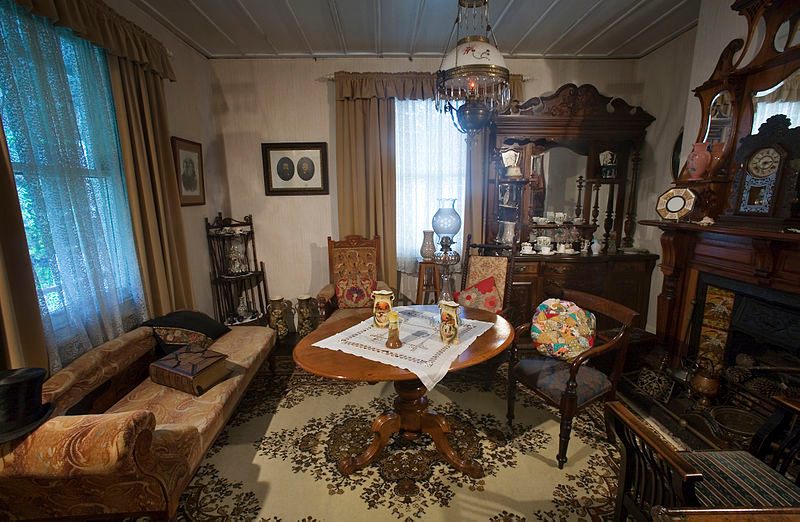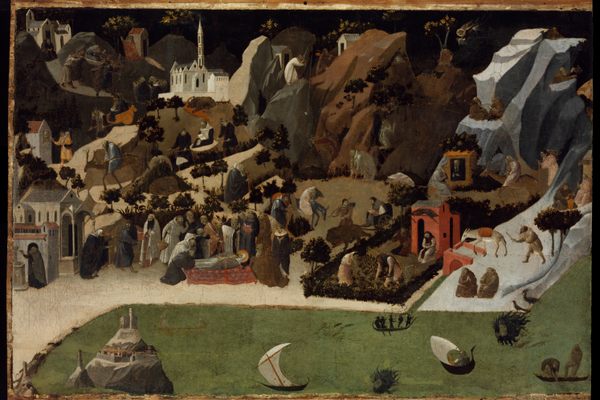No, Victorians Didn’t Cover Up Table Legs Because They Were Too ‘Sexy’
Debunking an admittedly adorable myth.
Perhaps you’ve heard this one before: In the Victorian era, upper-crust society members were so cartoonishly prudish that it was considered proper to cover up the legs of tables or pianos, for fear of bare “legs” of any kind being too evocative.
In reality, this oft-repeated notion was probably just a joke that at some point managed to grow into something bigger. “Regarding Victorians covering furniture legs for the sake of purity: That’s a myth… at least the ‘for the sake of purity part,’” says Therese Oneill, author of Unmentionable: The Victorian Lady’s Guide to Sex, Marriage and Manners.
As for the origins of this “common knowledge” historical myth, it seems to have come from a 1839 travelog by a writer and officer in the British Navy, Captain Frederick Marryat.

In his book A Diary in America, which recounts Marryat’s experiences traveling through the young country, the naval officer appears to have invented the legend without even trying. The idea seems to have stemmed from an anecdote wherein a young woman Marryat was traveling with scraped her knee while visiting Niagara Falls. When Marryat asked if her “leg” was okay, she was apparently scandalized, replying that a gentleman only refers to “limbs” in the presence of a lady, and never “legs,” even when talking about furniture.

Marryat goes on to explore this ludicrous concept by saying that he later visited a seminary where he saw a piano with legs covered by “modest little trousers with frills at the bottom of them.” The captain says that the coverings were there to maintain the “utmost purity of the young ladies.”
Despite being an ostensibly true, if colorfully embellished, account of his travels in America, these brushes with overblown modesty were probably more comical than canonical.
While it is true that during this era, some people covered parts of their furniture, they did so in an effort to keep their valuables from being damaged, not to hide the alleged sexuality of a dining table. “Victorians liked embellishment—cloth dye was the boldest and most adhesive it had ever been—so it wasn’t unusual to see all manner of decorated cloth draped on furniture,” says Oneill. In Matthew Sweet’s Inventing the Victorians, the author refers to Marryat’s account as “credulous and antagonistic,” pointing out that the concept of covering furniture legs for modesty was actually a dig on the perceived stuck-up prudishness of Americans.
Even so, the idea so well illustrated the overblown modesty of the day that it managed to catch on incredibly quickly. In Charles Dickens’ mid-19th century novel Martin Chuzzlewit, first serialized starting in 1842, one of the characters experiences a version of Marryat’s tale when he utters the idiom “the naked eye,” shocking the American woman he is speaking with into silence. Notably, Dickens was a friend of Marryat’s.

The gag that stuck-up Americans were covering their furniture out of modesty was quickly adopted by the British media, appearing in newspaper stories and music hall songs, according to the writer Tony Perrottet. But over time, what started as a joke about Americans morphed into a broadly held belief about Victorians in general, maybe even especially the British. “The joke was on Americans, but somehow we twisted it around to apply to the English,” says Oneill.
By the mid-to-late 20th century, the myth had attained notoriety thanks to a general view of Victorians as uptight prudes. In Sweet’s book, he cites multiple instances of the idea of Victorians covering their table legs being referenced, including in the introduction to the Thomas Hardy classic Far From the Madding Crowd.
Even today, the idea still lingers. But as Oneill bluntly puts it, covering furniture has never had anything to do with being too sexy. “It wasn’t to protect the decency of a nation when 80 percent of the population either shared a one-room house with their sexually active parents or worked on a farm where breeding and bodily functions where a fact of life.”









Follow us on Twitter to get the latest on the world's hidden wonders.
Like us on Facebook to get the latest on the world's hidden wonders.
Follow us on Twitter Like us on Facebook